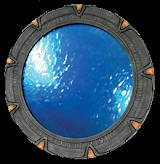Today found both Honors Physics and Physics D engaged in motion-based lab investigations. Honors Physics collected the last of the data and began preparing graphs for their circular motion experiment and Physics D conducted a lab on the 2-dimensional motion of a cart on a ramp. The cart demonstrated motion very similar to what we saw for a ball in free fall in our previous lab experiment, but this time, the acceleration came nowhere close to -9.81 m/s
2. However, as we increased ramp height, the acceleration began to climb and if we had actually approached vertical, we
would have gotten values close to
g. We'll talk about the vector nature of acceleration and forces tomorrow and refresh ourselves on the meaning of the shapes of the graphs we produced. Then, it's on to vector resolution.
Physics F looked at using the Pythagorean Theorem and the tangent function to combine perpendicular vectors. As long as the vectors in question form a right triangle, the Pythagorean Theorem can give us the magnitude of the resultant vector (hypotenuse of the triangle) and the tangent function provides direction. We practice working problems in class and hammered out how to choose the angle to evaluate and report for an answer. Tomorrow, we'll review this a bit and move on to vector resolution.
Intro Physics went over their velocity/displacement homework problems and, then, began to look at acceleration, the rate of change of velocity. We made sure the whole scope of the acceleration definition was explored and took on the interaction between velocity and acceleration in terms of signs. When they have the same sign, the object speeds up in the direction of the motion and when the signs are opposite the object slows down in the direction of motion. When you are at rest, but
are subject to acceleration, you start from rest in the direction of the acceleration. When you are in motion, but subject to zero acceleration, you continue moving with constant velocity. We ended the period with a look at the formula and unit for acceleration and we'll practice with that in class tomorrow, with an eye, also, at velocity-time graphs for objects showing motion with constant acceleration.






